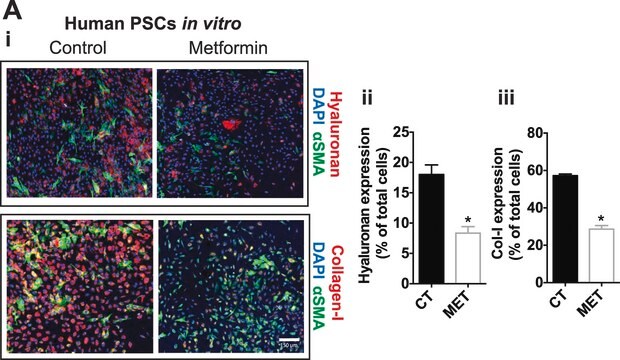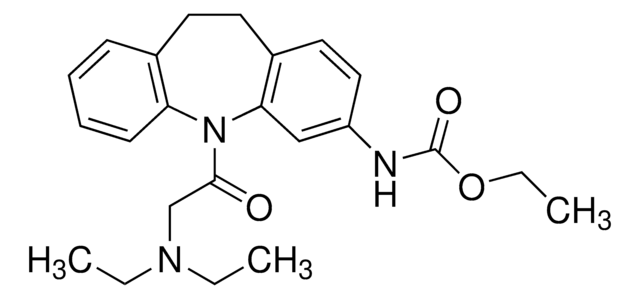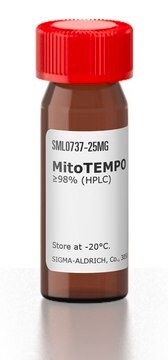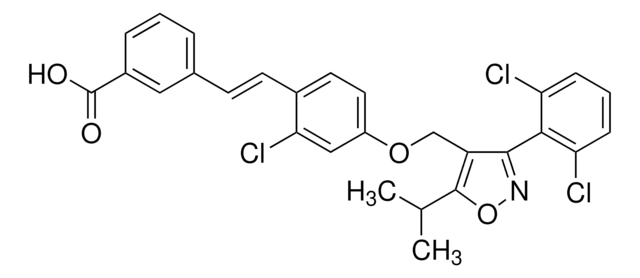T1443
TCPOBOP
≥98% (HPLC), solid
Sinônimo(s):
1,4-Bis-[2-(3,5-dichloropyridyloxy)]benzene, 3,3′,5,5′-Tetrachloro-1,4-bis(pyridyloxy)benzene
About This Item
Produtos recomendados
Nível de qualidade
Ensaio
≥98% (HPLC)
Formulário
solid
cor
white
solubilidade
DMSO: >10 mg/mL
H2O: insoluble
temperatura de armazenamento
2-8°C
cadeia de caracteres SMILES
Clc1cnc(Oc2ccc(Oc3ncc(Cl)cc3Cl)cc2)c(Cl)c1
InChI
1S/C16H8Cl4N2O2/c17-9-5-13(19)15(21-7-9)23-11-1-2-12(4-3-11)24-16-14(20)6-10(18)8-22-16/h1-8H
chave InChI
BAFKRPOFIYPKBQ-UHFFFAOYSA-N
Informações sobre genes
human ... NR1I3(9970)
Aplicação
Ações bioquímicas/fisiológicas
Características e benefícios
Nota de preparo
Código de classe de armazenamento
11 - Combustible Solids
Classe de risco de água (WGK)
WGK 3
Ponto de fulgor (°F)
Not applicable
Ponto de fulgor (°C)
Not applicable
Equipamento de proteção individual
Eyeshields, Gloves, type N95 (US)
Escolha uma das versões mais recentes:
Já possui este produto?
Encontre a documentação dos produtos que você adquiriu recentemente na biblioteca de documentos.
Conteúdo relacionado
Apoptosis, or programmed cell death (PCD), is a selective process for the removal of unnecessary, infected or transformed cells in various biological systems. As it plays a role in the homeostasis of multicellular organisms, apoptosis is tightly regulated through two principal pathways by a number of regulatory and effector molecules.
Nossa equipe de cientistas tem experiência em todas as áreas de pesquisa, incluindo Life Sciences, ciência de materiais, síntese química, cromatografia, química analítica e muitas outras.
Entre em contato com a assistência técnica




